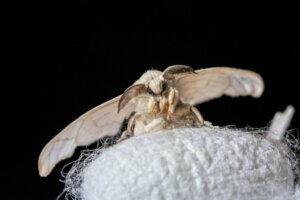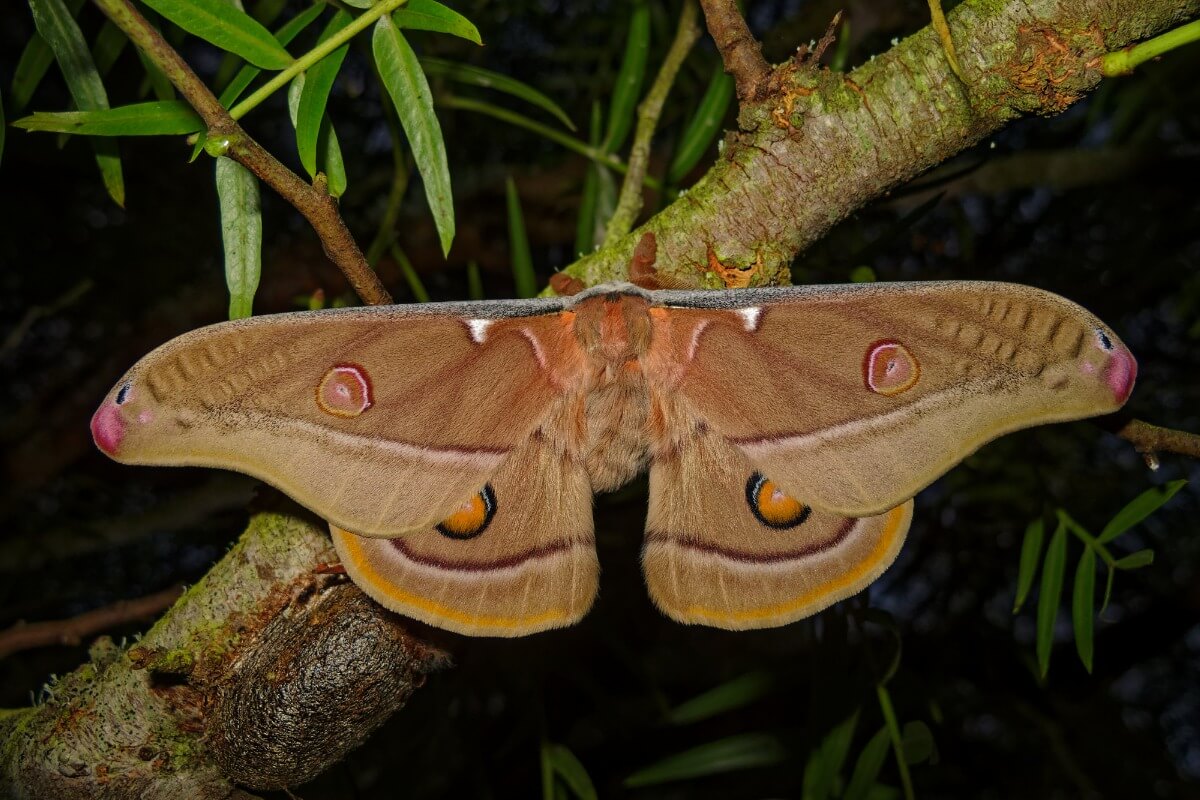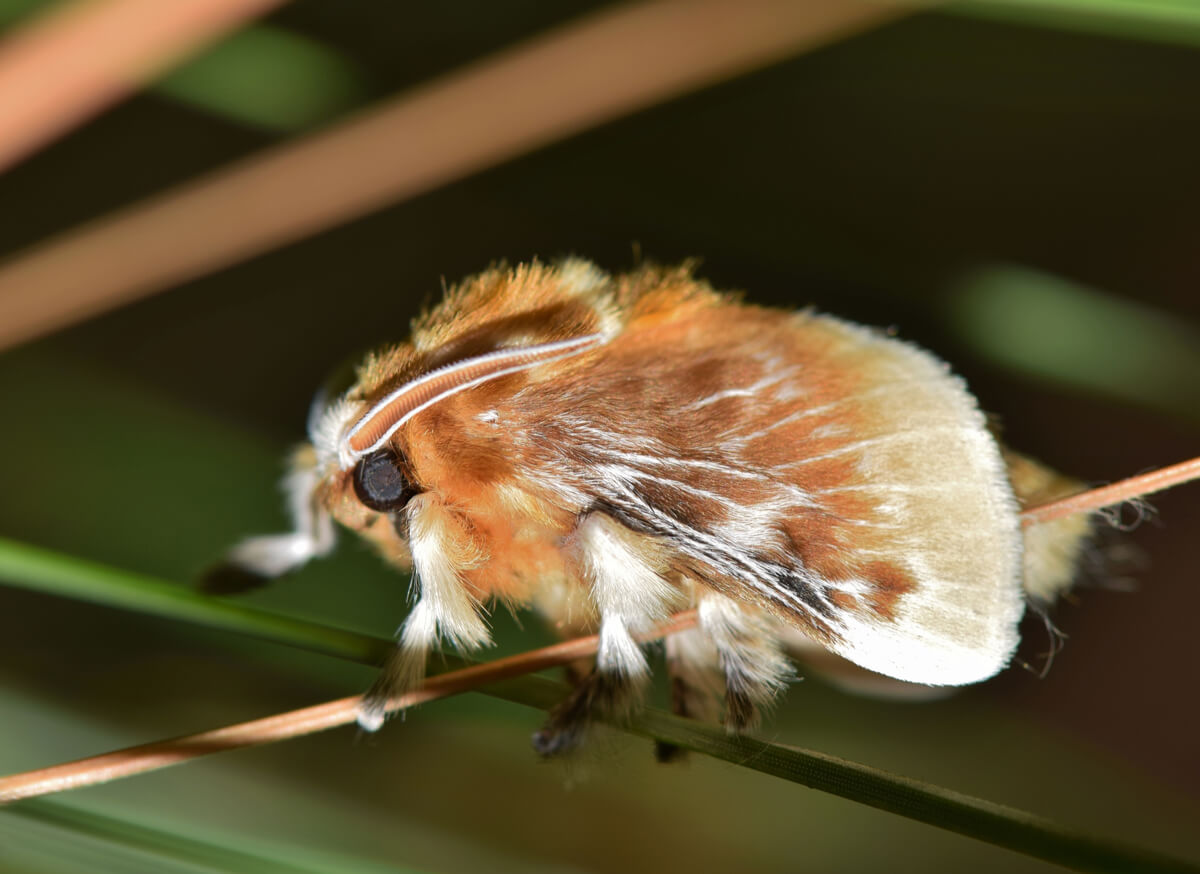10 Curiosities About Moths

There are many curiosities about moths, but they tend to have a bad reputation among the general population for “eating clothes” and destroying things. Nothing could be further from the truth, since most of the hairy Lepidoptera that we see soaring through the skies at night are totally harmless to humans and their belongings.
Moths are often overshadowed by butterflies, but they’re actually much more abundant and diverse than butterflies. This time, we’re giving these adorable and fluffy Lepidoptera the spotlight they deserve. Read on and discover their most interesting facts!
1. Moths are much more abundant than butterflies
In the first place, we need to classify these animals as far as taxonomy is concerned. Moths are Lepidoptera (order Lepidoptera ) and share a taxon with butterflies, representing all the species that can’t be classified as “true butterflies” (within this definition only the superfamilies Hedyloidea and Papilionoidea enter).
The group of moths is paraphyletic, that is, it includes representatives with a common ancestor, but others who are also relatives in separate groups (butterflies) are “left out”. Be that as it may, there are about 180,000 species of Lepidoptera worldwide and 160,000 of them are moths.
Moths are much more numerous than butterflies in terms of taxonomy. They exceed them by a ratio of 9 to 1.
2. The differences between the two animals are clear
The distinction between “moth” and “butterfly” isn’t just genetic. As indicated by the Library of Congress scientific portal, some taxonomic keys can be followed to differentiate them:
- Butterflies tend to gather their wings vertically when they stop, leaving their abdomen in view. On the other hand, the moths “pose” them on their abdominal region, as if it were a tent.
- Moths have a frénule that holds their fore and hind wings together. Butterflies don’t have this structure.
- Most butterflies are diurnal, while moths are active at night.
- When they pupate, the moth larvae form silky cocoons. On the other hand, butterflies larvae are enclosed in a chrysalis, hardened and smooth structures without silk.

3. Curiosities about moths: a complete metamorphosis
To exemplify the life cycle of these invertebrates we’re going to choose the famous silkworm (Bombyx mori). After laying eggs, the larvae of the species hatch after 14 days and begin to ingest plant matter incessantly, in this case, mulberry leaves. In their first 6 days of life, they make 4 successive molts and reach a size of 8 centimeters (just over 3 inches) in the last larval stage.
After destroying all the plant matter that their body allows them to, 10 days after being born the larvae pupate and are enclosed in a cocoon. Here they spend their energy transforming into a winged adult, which emerges in about 2 weeks. In total, the entire cycle takes a little less than a month to complete.
Most adult specimens live one or two weeks, just long enough to reproduce.
4. The life span of adults is very short
It isn’t possible to generalize as far as the ecology of the moths is concerned, as there’ll always be exceptions among the 16,000 species described. However, families like the Bombycidae attract attention, as their adult specimens have atrophied oral mechanisms and aren’t able to feed from the moment they leave the cocoon until they die. In other words, they only live to reproduce.
In the species that do feed in their adult phase, at most they’re capable of sipping nectar or plant liquids.
5. They were here before the butterflies on Earth!
If we look at the biological tree of Lepidoptera, we’ll see that moths came before butterflies and that they retain more ancestral traits. Fossils from this group have been found dating back 190 million years and are living proof of coevolution between species.
Many species of moths have evolved alongside the species they feed on, benefiting (or not) each other in the process.
6. Trivia about moths: they come in all sizes
Due to the wide variety of species that exist, we would expect moths to come in many different sizes and colors – and they do! The largest species is the atlas moth (Attacus atlas), with a length with outstretched wings of up to 24 centimeters (nearly 10 inches) and a surface area of 160 square centimeters (0.17 square feet). On the other side of the coin, we have Mayan Stigmella, at a tiny 1.2 millimeters in size.
However, all moths follow a common body plan: they have a head, thorax, and abdomen, and functional wings. They have 3 pairs of legs and stand out from the rest of the insects due to the presence of scales covering their body, especially the wings. As we’ve said, they differ from butterflies mainly by the arrangement of their wing structures.
7. The animal with the best hearing in the world is a moth
One of the most talked-about curiosities about moths lies in their hearing ability. According to the Earth Sky portal, the award for sound acuity goes to Galleria mellonella, capable of perceiving sounds up to 3000 kHz, with the limit for humans being 20 kHz. As of today, it’s the species with the best auditory ability on Earth.
Although it isn’t known what causes this superpower, it’s believed that this moth has developed such a specific communication system in order to go unnoticed by its greatest predator: the bat.
8. Some moths are excellent pollinators
We usually think of butterflies when talking about pollination, but the truth is that moths do the same job, and often an even more important one. Although they come out at night, many species go from flower to flower sucking nectar. Due to its body being full of hairs, pollen from plants easily sticks to its body, thus allowing fertilization by them landing on new flowers.
9. Many moths don’t eat, but they are eaten
Many adult moths live without any type of food and only exist to reproduce, but that doesn’t mean that they aren’t useful for the food chain. Birds, insects, amphibians, reptiles, and small mammals feed on these Lepidoptera, as they’re an excellent source of easily accessible protein and fat. In some cultures, even humans eat them.

10. Very few moths are harmful
As the last of our curiosities about moths, we want to emphasize that the vast majority of them don’t pose any problems for humans. Only a few specimens of the Tineidae family are capable of feeding on clothes materail in their larval stage, but the adults don’t even eat.
If you see a large, brown moth among your clothes, it’s most likely simply looking for a dark, damp place to rest until nightfall. You can scare it away or get it out of the house, but ending its life doesn’t make any sense.
All cited sources were thoroughly reviewed by our team to ensure their quality, reliability, currency, and validity. The bibliography of this article was considered reliable and of academic or scientific accuracy.
- How can you tell the difference between a butterfly and a moth? Library of Congress. Recogido a 8 de septiembre en https://www.loc.gov/everyday-mysteries/zoology/item/how-can-you-tell-the-difference-between-a-butterfly-and-a-moth/
- World’s Most Extreme Hearing Animal: It’s A Moth, Earth Sky. Recogido a 8 de septiembre en https://earthsky.org/earth/worlds-most-extreme-hearing-animal-its-a-moth/
- McGaughey, W. H., & Beeman, R. W. (1988). Resistance to Bacillus thuringiensis in colonies of Indianmeal moth and almond moth (Lepidoptera: Pyralidae). Journal of Economic Entomology, 81(1), 28-33.
This text is provided for informational purposes only and does not replace consultation with a professional. If in doubt, consult your specialist.